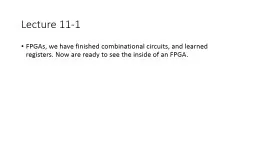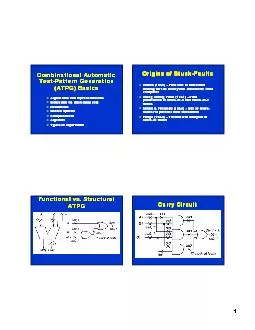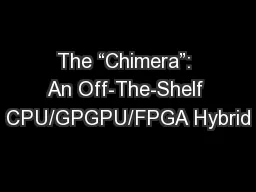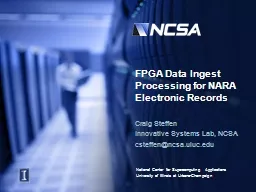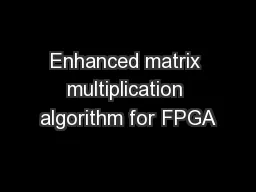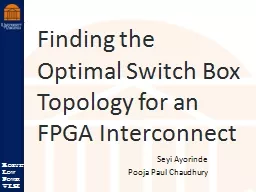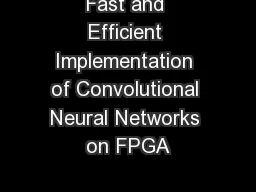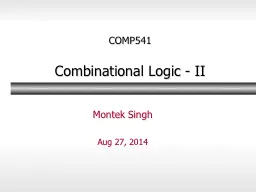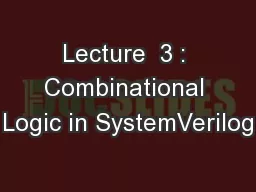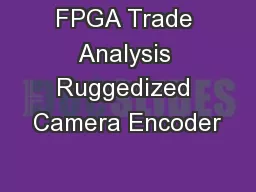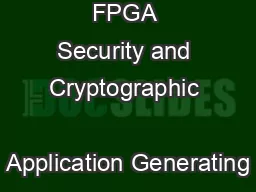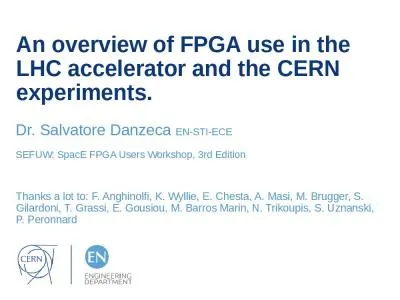PPT-Lecture 11-1 FPGA W e have finished combinational circuits, and learned registers. Now
Author : sherrill-nordquist | Published Date : 2018-02-23
Chap 9 CH 2 Complex Programming Logic Devices X ilinx XCR3064XL CPLD Function block 16 macrocells PLA Macrocell a flip flop multiplexers IA routes signals Input
Presentation Embed Code
Download Presentation
Download Presentation The PPT/PDF document "Lecture 11-1 FPGA W e have finished comb..." is the property of its rightful owner. Permission is granted to download and print the materials on this website for personal, non-commercial use only, and to display it on your personal computer provided you do not modify the materials and that you retain all copyright notices contained in the materials. By downloading content from our website, you accept the terms of this agreement.
Lecture 11-1 FPGA W e have finished combinational circuits, and learned registers. Now: Transcript
Download Rules Of Document
"Lecture 11-1 FPGA W e have finished combinational circuits, and learned registers. Now"The content belongs to its owner. You may download and print it for personal use, without modification, and keep all copyright notices. By downloading, you agree to these terms.
Related Documents

